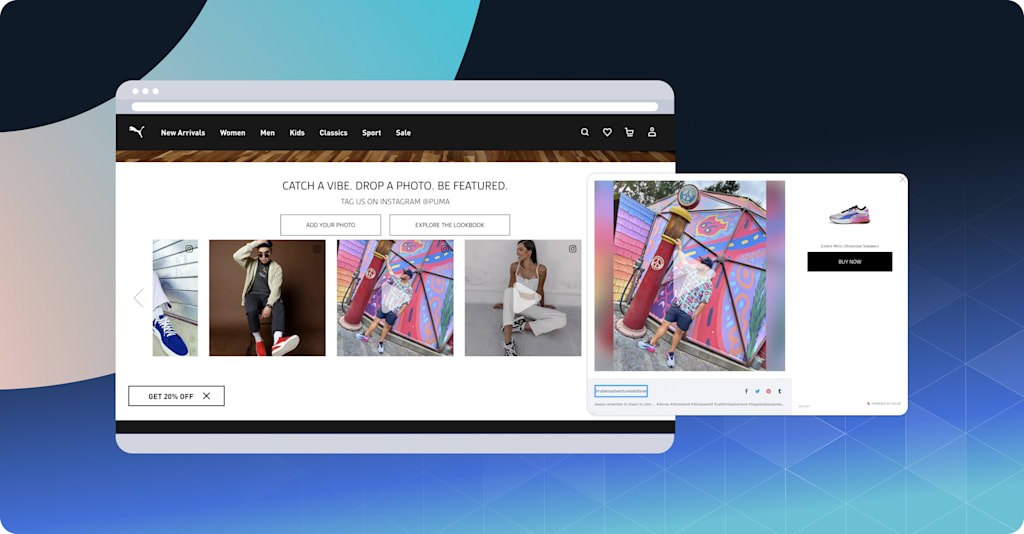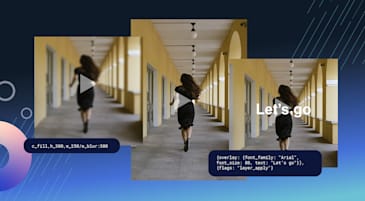Sports company PUMA connects with consumers around the world, producing hip and contemporary footwear, apparel, and accessories that is a step ahead of the trends. A vital part of the brand’s appeal is PUMA’s hypercool, next-generation mobile and web experiences.
Part of staying ahead of the trends requires constant innovation, which is why they recently tapped Formidable to build a new composable commerce platform, with Cloudinary’s image and video technology platform as its visual media layer, to make it faster and easier for them to develop and deliver modern omnichannel experiences.
To inspire and push the boundaries of its composable architecture and more, PUMA held a hackathon, pulling in several developers from Formidable, along with software agencies and internal teams to develop visionary concepts. Seattle-based Formidable, an open-source software organization and engineering consultancy, brought several teams to the hackathon to showcase more than two dozen ways PUMA can rapidly produce enhanced media and content on its new platform.
One idea that Formidable brought to the event jumped out — in fact winning the “Most Creative Idea” award — Cloudinary’s image-to-video capability that converts existing static images into a video experience in near real-time.
For PUMA, executing a video experience on a product detail page has been a large-scale production effort, normally taking two to three months. With Cloudinary’s image-to-video feature, Formidable was able to demonstrate to the PUMA team how dynamic videos of its fashion products could go live in a day using existing content.
Using Cloudinary’s Headless DAM capabilities is just one of the endless options PUMA now has within their MACH-based composable e-commerce platform. With the composable framework built by Formidable, PUMA can streamline their global commerce platform operations. Utilizing headless tools and cloud-native APIs, each region can continue to control content, commerce, and their specific localized needs.
To showcase the breadth of the composable tech stack, Formidable entered the hackathon and gathered a team that highlighted Cloudinary’s image-to-video feature, a capability they discovered while completing an on-demand partner implementation training course to learn the fundamentals of Cloudinary.
Formidable demonstrated to the PUMA teams how marketers, via an easy-to-use dashboard, can access a library of images hosted by Cloudinary. The users can take a selection of images, such as product shots by themselves, as well as images of models wearing products, and Cloudinary automatically renders the images into a video-like experience. Previous video assets can also be mixed into image-to-video creations, and be built for product pages, social media feeds, and more.
Cloudinary’s image-to-video feature bypasses the lengthy video production process and serves up dynamic videos with images already available on mobile, desktop, and IoT experiences.
The Cloudinary platform works alongside a headless content management system from Sanity that enables PUMA teams — especially non-technical marketers — to instantly update text, images, messaging, and more, directly to mobile and web pages. Cloudinary, as the image and video technology platform, storing all PUMA imagery and video assets, uses AI to configure the content, delivering automated and optimized visual experiences.
Bettina Donmez, Senior Manager Platform Development at PUMA, believes that “content is the driving force behind brands. Connecting the dots on how content experiences can be quickly set up in the CMS utilizing structured content, Cloudinary’s platform and delivery capabilities, commerce APIs, and the partnership with Formidable’s engineers, enable me to succeed in my role as product manager for our Headless platforms.”
Video unlocking more engagement among consumers on mobile and online than ever. A recent survey from Wyzowl found 89% of consumer respondents said they bought a product or service after watching a video.

Like many other online retailers recognize, the image-to-video feature is a way to leverage the impact of video through imagery and assets that are already on hand. Cloudinary also improves how brands deliver video in other ways.
- Optimizing user-generated videos (UGV). Videos produced and uploaded by happy customers are powerful testimonials and drivers of engagement. Unfortunately, curation and moderation of UGV can be a lot of work. Cloudinary’s prebuilt workflows automates UGV to ensure videos are in the best possible quality and scanned for suitable content.
- Creating 360° product videos. Deliver 360° videos that are optimized by file size, cropped so content is always in a hero position, and delivered at the best quality available through adaptive bit rate streaming.
- Making videos interactive. Consumers don’t always want to sit back and watch but would rather interact with a video, such as shoppable videos. Cloudinary offers a video player widget that includes a customizable, interactive functionality.

To learn about Cloudinary’s array of video features, contact Cloudinary here or request a demo and see firsthand how Cloudinary’s video features has helped customers like PUMA build experiences for a modern composable commerce world. Cloudinary launches new and evolving features of its technology monthly. Updates are available in the monthly releases section.



